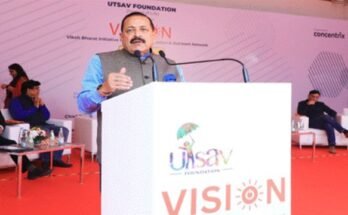The Indian healthcare providers view that it is the experienced pool of skilled doctors to handle any complicated disorders and surgical intervention which is propelling the growth of medical tourism in the country. According to the Grant Thornton report, India’s medical tourism market will grow from US$ 3 billion to US$ 8 billion by 2020.
On the occasion of the World Tourism Day observed annually on September 27, it is observed that foreign patients prefer India for the healthcare because of the dependability of medical skills and cost advantage.
Dr. Manish Banker, chairman and group medical director, Nova IVI Fertility stated that when it comes to medical tourism, India is emerging as one of the most preferred destinations globally. With infertility becoming a growing concern worldwide, India is considered as the leading destination for fertility medical tourism.
Advanced hospitals, embryology labs and global compliance help the IVF industry grow even further. Even the Assisted Reproductive Technology (ART) is on par with global standards which has paved way for the increased acceptance of travelling to India for infertility treatment, added Banker.
India is a key favourite medical tourism destination because of doctors expertise and presence of medical educational institutes churning out qualified medical specialists. Foreign patients usually come to India for conditions like cancers, cardiac conditions and gastroenterological, neurological and gynaecological problems, said S Guru Prasad, general manager, International Marketing, Narayana Health – India.
Contending with Prasad was Sanjoy Das, head-international patients division, Dr. Agarwal’s Eye Hospital, who said that India is a preferred country in the medical tourism for ophthalmology, specially for patients from Middle East & Africa. Indian ophthalmologists fare high compared to their international counterparts, due to their exposure to huge number of patients and the complexity of treatments. Patients in the GCC countries & Africa find it more affordable and safe to visit India and their location preferences for treatment are Chennai, Bengaluru, Hyderabad and Mumbai.
Moreover because of India’s large population, doctors’ success rate can be measured at any given point of time which becomes a comfort zone for the foreign patients, said Prasad adding that most patients come from Bangladesh, Iraq, Yemen, Kenya, Tanzania and Nigeria.
When compared to several developed countries, the cost of the treatment is 40% cheaper in India for any given procedure. Moreover all Indian hospitals are equipped with advanced medical technology including robotic surgeries performed successfully. In fact, most medical tourists insist for robotic surgery because it is minimally invasive, faster recovery and shorter stay.
From an ophthalmology perspective, international patients access Indian eye care centres for dry eyes to complex eye conditions. Specifically the treatment for certain complex eye conditions of the retina, cornea and advanced refractive surgery are not available in Saudi Arabia, Qatar, Yemen, Oman and UAE. Pediatric eye care is also accessed for squints, trauma, congenital cataracts and glaucoma. Eye surgery cost in India is 30% to 75% lesser than the Middle East. A corneal transplant treatment is around Rs. 1 lakh as against Rs. 4 lakh in Oman or Dubai.
Note: News shared for public awareness with reference from the information provided at online news portals.



